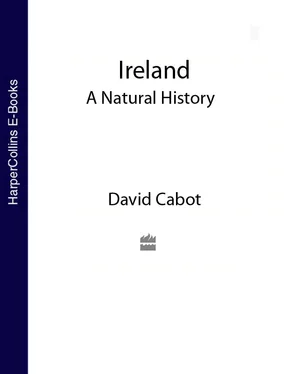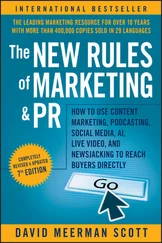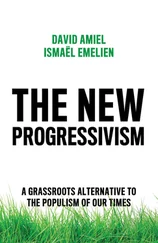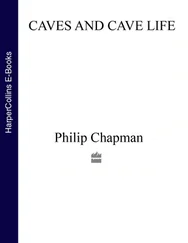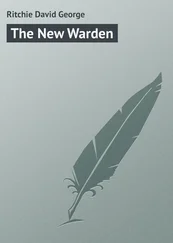Boate went on to say that most of the woodland remaining after the initial English onslaught was destroyed for the manufacture of charcoal used in the smelting of iron, an industry started by the New English who had been in Ireland since the Elizabethan wars. Another aspect that Boate commented on was the nature of the soil in Ireland. He noticed that the surface deposits were varied – as the last Ice Age would have ordained them to be – but he did not speculate as to their origin: ‘The fertile soil is in some places a blackish earth, in others clay, and in many parts mixt of both together; as likewise there be sundry places, where the ground is mixt of earth and sand, sand and clay, gravel and clay, or earth; but the chalk ground and the red earth, which both are very plentiful and common in many parts of England, are no where to be found in Ireland.’
Perhaps the most interesting feature of Ireland for Boate was its suitability for agriculture. Emphasising the potential to make profits as a planter, he expounded various possibilities for the improvement of the land by drainage, the laying down of special manures, and the reclamation of bogs. He went to great technical length to make the prospect of tillage in Ireland an attractive one: ‘the best and richest soils, if but half a foot deep, and if lying upon a stiff clay or hard stone, is not so fertile, as a leaner soil of greater depth, and lying upon sand and gravel, through which the superfluous moisture may descend, and not standing still, as upon the clay and stone, make cold the roots of grass, or corn, and so hurt the whole.’
Other early endeavours
In 1633, 12 years before Boate was busy writing his book from his London quarters, a real field naturalist, Richard Heaton ( c. 1604– c. 1666), born in England, first arrived in Dublin to become rector of Kilrush, Co. Clare, and later Birr, Co. Offaly, before returning to England after the outbreak of the Confederate War in 1641. He came back to Birr in 1660 and was appointed Dean of Clonfert later that year. It was only during his first sojourn that he botanised, exploring the landscape, discovering new plant records and passing them on to other botanists such as William How who published them in Phytologia Britannica (1650). 30Heaton, credited by the botanical scholar Charles Nelson to be the first person to have carried out a systematic study of the Irish flora, probably prepared a manuscript sometime before 1641. What became of it is unknown but it was certainly used by Caleb Threlkeld (1676–1728) in the formation of his own comprehensive study Synopsis Stirpium Hibernicarum, published in 1726. 31
Another early traveller to Ireland was Gédéon Bonnivert (fl.1673–1703), born at Sedan in Champagne, France, who came as one of a ‘troop of horse’ to join King William III’s army in Ireland for seven weeks in the summer of 1690. Bonnivert, a highly educated man, an enthusiastic scientist and eager botanist, corresponded with the eminent botanists Hans Sloane and Leonard Plukenet. Sloane (1660–1753), born in Killyleagh, Co. Down, founded the Chelsea Botanic Garden whose collections went on to form the nucleus of the future British Museum. In a letter dated 5 August 1703, Bonnivert wrote to Sloane:
‘… Near this Town [Limerick] in a bog call’d by y ename of Douglass grow aboundance of Plants, and amongst ’em a Pentaphyllum rubrum out of those bogs as I have seen fìrr trees w ththeir boughs and roots very sound timber, and w chis most admirable is that none of those trees grow in Ireland…’. 32
Bonnivert sent Sloane and Plukenet plant specimens that he had gathered in Limerick, Cork, and elsewhere. These specimens, now residing in the Sloane Herbarium in the British Museum, represent the oldest known herbarium material of Irish origin. 30
In 1682, some 30 years after Boate’s Irelands Naturall History was published, the London book publisher Moses Pitt proposed to put together an English Atlas which would include natural history of the regions. William Molyneux (1656–98), elder brother of the famous Thomas Molyneux (1661–1733) and ardent Baconian, was approached by Pitt to write the natural history of Ireland. Upon accepting, Molyneux sent out questionnaires, or Quareries, listing 16 questions to his contacts throughout Ireland. Unfortunately, the project collapsed in 1685 on the arrest of Pitt for non payment of debts and Molyneux burnt all that he had written himself, only sparing some rough notes which found their way into the Library of Trinity College, Dublin.
One of Molyneux’s correspondents was the scholar and antiquarian Roderic O’Flaherty (1629–1718) who lived in west Galway and had written in 1684 a fine text about his region A Chorographical Description of West or H-Iar Connaught , which for unknown reasons had to wait for 162 years before it was edited by James Hardiman and then published by the Irish Archaeological Society in 1846. 33O’Flaherty was an accurate recorder and while his observations were generally restricted to Connemara they provide an important source of information to supplement the writings of Boate which covered a much broader geographical area.
‘The country is generally coarse, moorish, and mountanous, full of high rocky hills, large valleys, great bogs, some woods, whereof it had abundance before they were cut. It is replenished with rivers, brooks, lakes, and standing waters, even on the tops of the highest mountains. On the sea side there are many excellent large and safe harbours for ships to ride on anchor; the climate is wholsome, soe as divers attain to the age of ninety years, a hundred and upwards. The land produces wild beasts, as wolves, deere, foxes, badgers, hedgehogs, hares, rabbets, squirrells, martins, weesles and the amphibious otter, of which kind the white-faced otter is very rare. It is never killed, they say, but with loss of man or dog, and its skin is mighty precious. It admits no rats to live anywhere within it, except the Isles of Aran, and the district of the west liberties of Galway.’
The other section of O’Flaherty’s text directly relevant to the natural history of Ireland concerned the creatures and birds in the coastal waters off Connemara.
‘It now and then casts ashore great whales, gramps [dolphins], porcupisses, thunies [tuna]. Both sea and land have their severall kinds of birds. Here is a kind of black eagle, which kills the deere by grappling him with his claw, and forcing him to run headlong into precipices. Here the ganet soares high into the sky to espy his prey in the sea under him, at which he casts himself headlong into the sea, and swallows up whole herrings in a moresell. This bird flys through the ship’s sailes, piercing them with his beak. Here is the bird engendered by the sea out of timber long lying in the sea. Some call them clakes and soland-geese, some puffins, other bernacles, because they resemble them. We call them “girrinn”.’
Here we find again the enduring theory that some birds were descended from floating planks of wood, i.e. from the attached shellfish – something already encountered in the work of Cambrensis.
In the early 1680s, when O’Flaherty was writing his text, Ireland was in a scientific and intellectual torpor. Social and financial power were rooted in London with few benefits spreading westwards. A notable exception, from the first part of the century was the scholar James Ussher (1581–1656), who became Bishop of Meath in 1621 and four years later Archbishop of Armagh. His main contribution to natural history was to provide some scope for the belief in evolutionary theory rather than a catastrophic vision of the creation of the world. After careful study of the Old Testament he concluded that the world had begun ‘upon the entrance of the night preceding Sunday 23 October’ in the year 4004 BC. 34His chronology was incorporated into one of the Authorised Versions of the Bible in 1701 and henceforth was known as ‘The Received Chronology’ or ‘Bible Chronology’. 35That the world had existed for some 6,000 years posed many problems for those that believed in cataclysms. Apart from the sparkle of Usher and a few others there was little happening in the field of science in Ireland at that time. Indeed, K. Theodore Hoppen concluded that ‘the scientific scene in pre-restoration Ireland was one in which inertia, rather than movement, was quite clearly the dominant factor’. 36
Читать дальше
